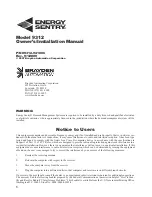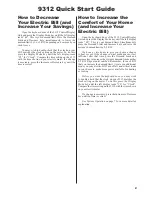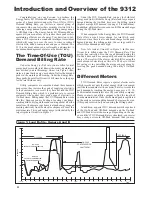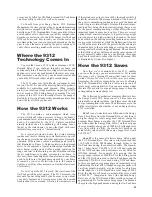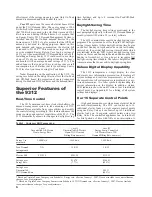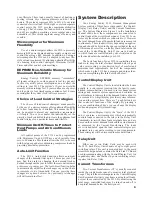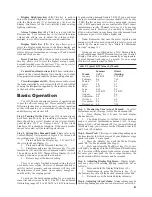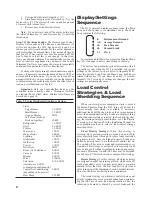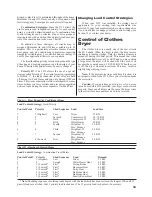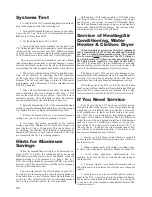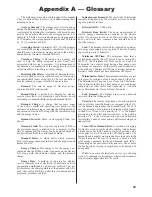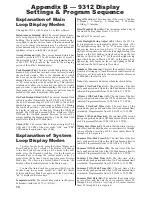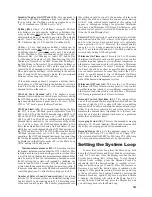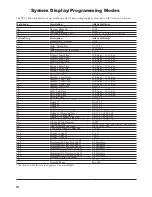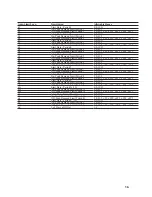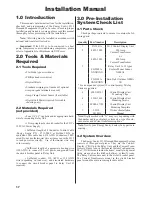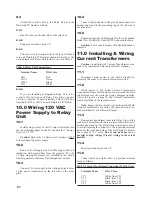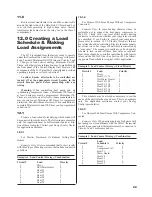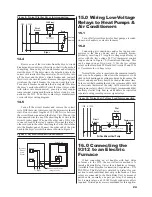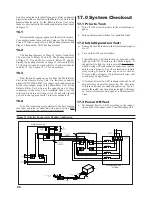
Chart A - Heat Pump/Air Conditioner Home
Load Control Strategy:
Fixed Priority
Control Point
Priority
Shed Sequence Load
Load Size
1
1 (Highest)
Last
Dryer 5.5
KW
2
2
Seventh
Compressor #1
3.0-7.0 KW
3
3
Sixth
Compressor #2
3.0-7.0 KW
4
4
Fifth
Water Heater
4.5 KW
5
5
Fourth
Strip Heat #1
5.0 KW
Elec. Furnace
6
6
Third
Strip Heat #2
5.0 KW
Elec. Furnace
7
7
Second
Strip Heat #3
5.0 KW
Elec. Furnace
8
8 (Lowest)
First
Strip Heat #4
5.0 KW
Elec. Furnace
Chart B - Baseboard Heated Home
Load Control Strategy:
Combination Fixed/Rotate
Control Point # Priority
Shed Sequence Load
Demand
1
1 (Highest)
Last
Dryer
5.5 KW
2
2
Second
Water Heater Heat
4.5 KW
3
3 (Lowest)*
First*
Living Room
3.5 KW
4
3 (Lowest)*
First*
Basement Heat
4.0 KW
5
3 (Lowest)*
First*
Entry Heat
1.5 KW
6
3 (Lowest)*
First*
Bedroom Heat
2.0 KW
7
3 (Lowest)*
First*
Bedroom Heat
2.0 KW
8
3 (Lowest)*
First*
Family Room Heat
3.0 KW
*Note:
Shedding sequence of rotating loads begins with the load which has been restored the longest. When all #3
priority loads are all shed, the #2 priority load is shed next. The #1 priority load is shed last, if necessary.
desired comfort level is maintained throughout the home.
Minimum On and Off-Times, usually not required under
this strategy, may be assigned to each circuit if required.
Combination Strategies:
Since the 9312 allows the
user to program an independent priority for each control
point, a virtually unlimited number of combination load
control strategies can be selected. One or more groups of
rotating loads, with or without fi xed priority loads are pos-
sible. One combination is shown in Chart B.
In addition to these strategies, all circuits may be
assigned Minimum On and Off-Times variable up to 20
minutes. This is a particularly attractive feature because
heat pump and air conditioning compressors requiring
time delay switching may be controlled under a strategy to
best fi t your application, lifestyle or use pattern.
The load shedding priority selected is based on the type
of heating and cooling equipment and the design of your
house. If desired, the priorities may be easily changed.
Priority #17:
The 9312 allows the use of a special
strategy called Priority 17. If a control point is programmed
to Priority 17, the loads connected to that relay are held
off during On-Peak Times and run only during Off-Peak
Times. This works especially well for water heaters because
it moves them to a low cost time and prevents competition
between loads during the more expensive On-Peak Time.
10
Changing Load Control Strategies
When your 9312 was installed, the strategy most
appropriate to your existing load requirements was
selected. If your load requirements have since changed, or
if you would like to change your load control strategy, see
Section 12 or contact your dealer.
Control of Clothes
Dryer
The clothes dryer is usually one of the last circuits
the 9312 sheds. When the dryer is shed, the dryer motor
continues to tumble clothes. Only the heating element is
turned off during this brief period. This means that when
your demand limit is set at 5 or 6 KW and you are cooking
a large meal, the dryer will be shed when the oven is on
because the oven takes apx. 3 KW-4.5 KW. When the oven
is off, the dryer element is restored. This may result in
slightly longer drying times.
Note:
If the dryer motor stops each time it is shed, it is
not properly wired to the 9312. Have your electrician make
the correction.
Caution:
If you purchase a new dryer or if you move
into a home with a 9312 installed, your dryer may not work
properly. Since not all dryers are the same, the dryer wires
in the circuit breaker panel may need to be reversed.



